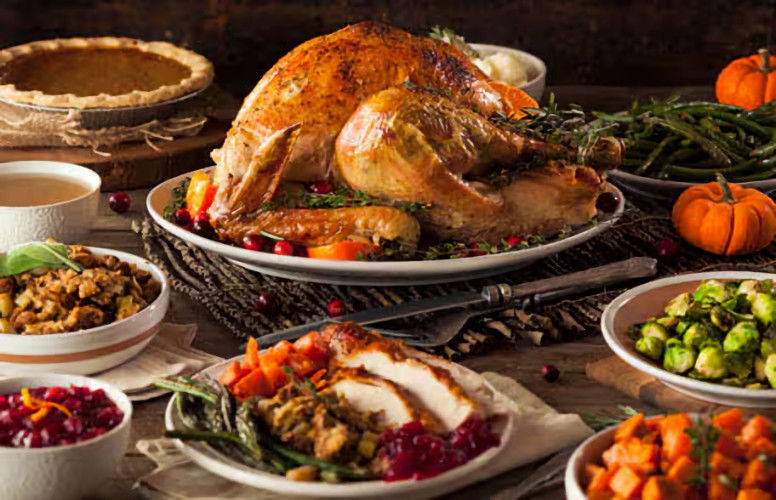Oregon Health Authority offers four simple steps to holiday food safety: Clean, separate, cook and chill

PORTLAND, Ore. (KTVZ) —The Oregon Health Authority is encouraging holiday cooks to keep their families, friends and Thanksgiving guests safe from foodborne germs by practicing four simple steps to food safety: clean, separate, cook and chill.
The recommendations from the US Centers for Disease Control and Prevention (CDC) urge people to always keep hands and surfaces clean; avoid cross-contamination between foods; cook foods to the right temperature; and refrigerate leftovers.
The bottom line, said Emilio DeBess, D.V.M., state public health veterinarian and foodborne illness expert at OHA’s Public Health Division, is this: By taking a few steps and planning ahead, you can help keep the holiday season merry and bright.
“Foodborne infections from bacteria such as Salmonella, Campylobacter and Clostridium perfringens can ruin a holiday gathering, especially if there’s an outbreak. But they are entirely preventable,” DeBess said. “In particular, leaving meat-based foods sitting out for several hours is a classic cause of C. perfringens outbreaks.”
Turkey and roast beef are common sources of Salmonella and Campylobacter, which can spread to other foods from unwashed hands and contaminated kitchen surfaces. In addition, according to CDC, Clostridium perfringens food poisoning results from eating improperly cooked and stored foods—for example, if the food sits out for an extended length of time before refrigerating.
The three bacteria share two symptoms: diarrhea and stomach cramps, with symptom onset beginning between several hours (Clostridium) and several days after infection. Salmonella infection can also cause headaches, nausea, vomiting and loss of appetite, and Campylobacter can also cause fever, nausea and vomiting.
To prevent contamination from these bacteria during holiday meal preparation take the following steps, according to DeBess and CDC:
Clean: Wash hands and surfaces often
- Wash your hands at least 20 seconds with soap and water before, during and after preparing food, and before eating. Always wash hands after handling uncooked meat, chicken and other poultry, seafood, flour, or eggs.
- Wash utensils, cutting boards and countertops with hot, soapy water after preparing each food item.
- Rinse fresh fruits and vegetables under running water.
Separate: Don’t cross-contaminate
- When grocery shopping, keep raw meat, poultry, seafood and their juices away from other foods.
- Keep raw or marinating meat, poultry, seafood, and eggs separate from all other foods at the bottom of the refrigerator; store raw meat, poultry, and seafood in sealed containers or wrap them securely so the juices don't leak onto other foods.
- Use one cutting board or plate for raw meat, poultry, and seafood and a separate cutting board or plate for produce, bread, and other foods that won't be cooked.
- Washing raw chicken, which is ready to cook and doesn’t need washing first, can spread germs to other foods, the sink and the counter, and can make you sick.
Cook to the right temperature
- The only way to tell if food is safely cooked to a temperature that kills germs is to use a food thermometer.
- All poultry, including ground chicken and turkey, should be cooked to 165°F.
- Whole cuts of beef, veal, lamb, and pork, including fresh ham, should be cooked to 145°F. (Allow the meat to rest for 3 minutes before carving or eating).
- Fish with fins should be cooked to 145°F, or cook until the flesh is opaque and separates easily with a fork.
- Ground meats, such as beef and pork, should be cooked to 160°F.
- Leftovers and casseroles should be cooked to 165°F.
- Check this chart for an even more detailed list of temperatures and foods, including shellfish and precooked ham.
Chill: Refrigerate promptly
- Never leave perishable food out for more than 2 hours (or 1 hour if exposed to temperatures above 90°F).
- Keep your refrigerator at 40°F or below and your freezer at 0°F or below, and know when to throw food out before it spoils. If your refrigerator doesn't have a built-in thermometer, keep an appliance thermometer inside it to check the temperature.
- Package warm or hot food in several clean, shallow containers and then refrigerate—it is OK to put small portions of hot food in the refrigerator since they will chill faster.
- If the food is exposed to temperatures above 90°F, like sitting in a hot car or at a picnic, refrigerate it within 1 hour.
- Thaw frozen food safely in the refrigerator, in cold water, or in the microwave – never thaw food on the counter because bacteria multiply quickly in the parts of the food that reach room temperature.
For more information, visit “Preparing Your Holiday Turkey Safely” and “About Four Steps to Food Safety”.